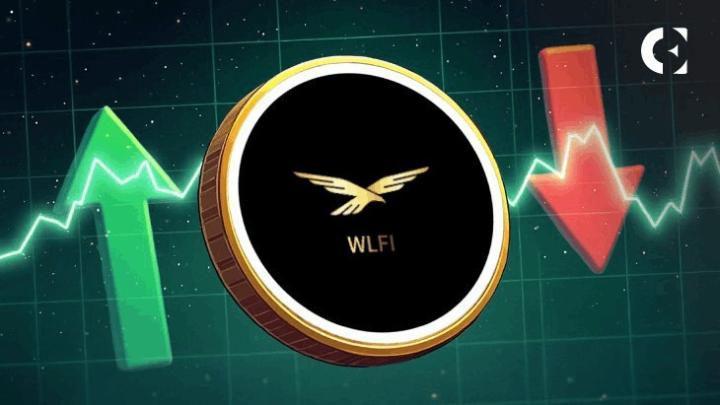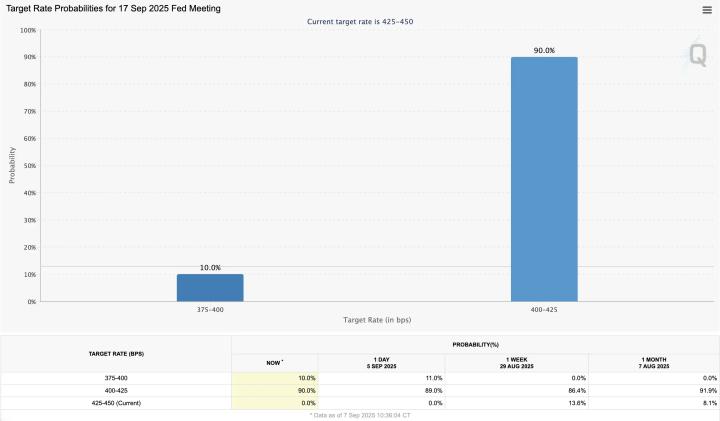Key Highlights
Modular architecture, lower cost: RedStone separates data collection and on-chain delivery, storing large amounts of data on Arweave, and providing the latest data on-demand, greatly reducing costs and latency.
Ultra-fast updates, multi-chain compatibility: RedStone provides sub-second (around 300ms) price data, supporting over 70 blockchains and 130+ projects, rapidly expanding the Web3 ecosystem.
Challenging Chainlink and Pyth: Unlike Chainlink's push model, RedStone uses a "pull" mechanism, potentially saving up to 70% in Gas fees, and is also more suitable for multi-chain scenarios than Pyth.
RED token and EigenLayer staking mechanism: The RED token uses a staking and slashing mechanism to ensure network security, combined with EigenLayer staking to enhance security, attracting institutional-level users.
Expanding to DeFi and real-world asset applications: RedStone plans to enter high-frequency trading, asset tokenization, and traditional finance integration, gradually transitioning to DAO governance to ensure long-term decentralized development.
 In May 2022, an oracle failure caused a popular DeFi platform to lose millions of dollars, further demonstrating the importance of reliable data for decentralized finance. Now, RedStone is entering the market as a next-generation oracle service provider, redefining the acquisition, transmission, and security of on-chain data. With its modular architecture, Arweave storage technology, and on-demand data delivery mechanism, RedStone (RED/USDT) not only effectively reduces costs and latency, but also seamlessly expands to multiple blockchains. Next, we will delve into this innovative oracle network and how it is shaping the future of Web3.
In May 2022, an oracle failure caused a popular DeFi platform to lose millions of dollars, further demonstrating the importance of reliable data for decentralized finance. Now, RedStone is entering the market as a next-generation oracle service provider, redefining the acquisition, transmission, and security of on-chain data. With its modular architecture, Arweave storage technology, and on-demand data delivery mechanism, RedStone (RED/USDT) not only effectively reduces costs and latency, but also seamlessly expands to multiple blockchains. Next, we will delve into this innovative oracle network and how it is shaping the future of Web3.
Table of Contents
Problems with Traditional Oracles
Why does Web3 need oracles?
Risks and limitations of existing oracle models
RedStone's Modular Architecture
Decoupling of data collection and transmission
How Arweave enables efficient storage
Real-world case: How it helps DeFi protocols reduce costs
Who Can Benefit from RedStone?
DeFi protocols: Lending, derivatives, yield aggregation
NFTs and gaming: Dynamic attributes, fair game mechanics
Supply chain and insurance: Real-asset tracking
RedStone's Ecosystem and Growth
Supports 70+ blockchains, integrates 130+ projects
Key partnerships: DeFi, traditional finance, institutional support
Venture capital and Binance Launchpad listing
The RED Token and Economic Model
Staking, slashing mechanism, and network security
Fee distribution and participant incentives
Market performance and future applications
How to Ensure Security and Long-Term Development?
Core team and background introduction
Community involvement and developer ecosystem
Governance model: Towards decentralized DAO
Problems with Traditional Oracles
Why Are Oracles Important for Web3?
In decentralized finance (DeFi) and the broader Web3 ecosystem, smart contracts must rely on external data to operate. This data may include cryptocurrency prices, weather forecasts, or even sports event results. However, since blockchains are closed systems, they cannot directly access external information, and thus require "oracles" as a bridge to bring off-chain data on-chain.
If the data provided by oracles is inaccurate or delayed, it can lead to severe financial losses. In the past, some well-known DeFi platforms have suffered losses of millions of dollars due to oracle failures, highlighting the importance of data accuracy and timeliness in the blockchain world.
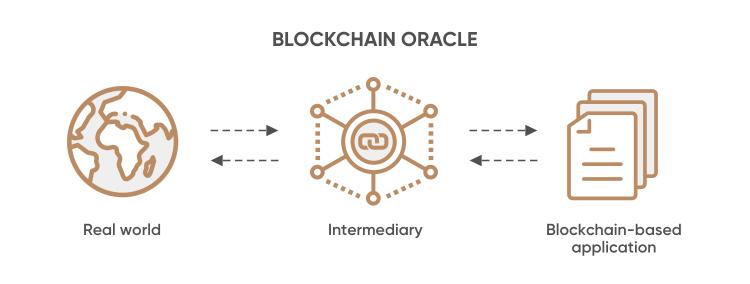
Image Credit: Capital.com
Why Is RedStone an Industry Innovator?
RedStone adopts a completely new modular architecture, fundamentally changing the way traditional oracles operate. Unlike the conventional approach, RedStone separates data collection and on-chain delivery, optimizing cost and efficiency:
The oracle will store massive amounts of data on decentralized, permanent storage networks like Arweave, ensuring data security and low storage costs.
Data will only be pushed on-chain when a smart contract actually needs a specific data point, reducing on-chain burden and saving Gas fees.
This architecture not only significantly reduces costs, but also accelerates data updates and allows developers to more flexibly integrate external data.

Image Credit: RedStone
RedStone's Modular Architecture
Decoupling of Data Collection and Transmission
Traditional oracles typically combine data collection (off-chain) and data publishing (on-chain) within the same system, a model that is not only costly, but also limits scalability. In contrast, RedStone adopts a modular design, separating these two components, significantly improving efficiency and reducing fees:
Off-Chain Providers: Independent nodes collect information from various data sources (centralized exchanges, decentralized exchanges, data aggregators, institutional-grade data sources, etc.).
Validation & Signing: Data providers verify the data using anomaly detection, cross-source comparison, and cryptographic signing to ensure integrity and credibility.
Arweave Storage: The signed data is stored on Arweave, ensuring permanent availability and immutability at a much lower cost than Ethereum.
On-Chain Delivery: Pull Model: DApps only retrieve the latest data from Arweave when executing a transaction, embedding it in the transaction to reduce unnecessary on-chain writes and save Gas fees; Push Model: Relayers periodically update data on-chain, suitable for applications that require real-time data.
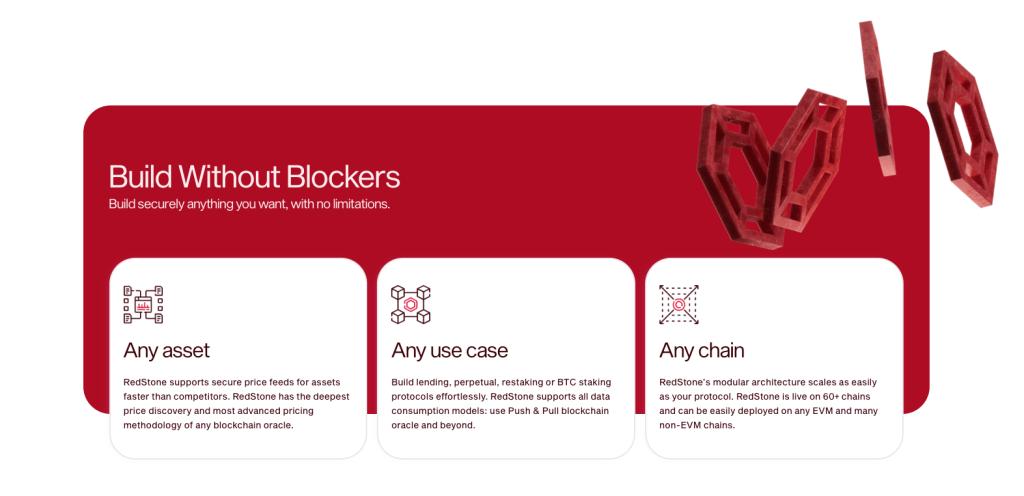 Image Credit: RedStone
Image Credit: RedStone
Why Choose Arweave?
Arweave is a decentralized network focused on permanent data storage, where users only need to pay a one-time fee to ensure "permanent availability" of their data. This is crucial for oracles like RedStone, which process massive amounts of real-time data every second.
For example, storing 1 GB of data on Ethereum could cost millions of dollars, while on Arweave it would only be a few tens of dollars, significantly reducing the cost of data storage.
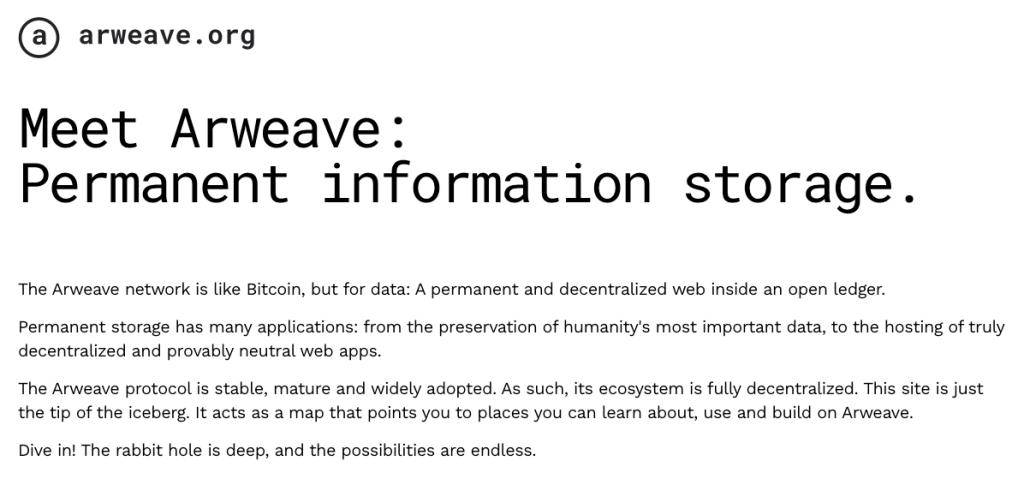
Image Credit: Arweave
Real-World Cases
Lending protocols on Binance Smart Chain (BSC): Lending protocols typically only need to query the latest price data when user transactions occur, and do not require frequent on-chain writes. By utilizing RedStone's pull model, these protocols can directly embed the latest price data into the user's transaction process, without relying on traditional oracles to continuously push and pay high gas fees. This approach reduces the operating costs of lending protocols, enables faster data updates, and also enhances the user experience.
Who can benefit from RedStone's oracle solution?
DeFi Protocols
Lending & Borrowing: Real-time price data can accurately estimate the collateral asset value. Projects like Venus (BSC) and Pendle have integrated RedStone, using sub-second (~ 300 ms) price updates to improve security and market responsiveness.
Derivatives & High-Frequency Trading: RedStone provides low-latency (~ 300 ms) price data to support perpetual contracts, options trading, and quantitative trading strategies, helping traders optimize their profitability.
Yield Aggregation: Many DeFi protocols offer innovative investment opportunities through asset tokenization or yield splitting, which heavily rely on RedStone's accurate valuation to ensure fair pricing of yield-bearing assets.
NFT & Gaming
Dynamic Attribute NFTs: Minted artworks or collectibles can be dynamically updated using external data from RedStone. For example, NFTs can change in appearance or rarity based on real-time sports results or weather conditions.
Game Mechanics: Role-playing (RPG) or fantasy sports games require reliable external data to ensure fairness. RedStone will also introduce Verifiable Random Function (VRF) in the future to provide true randomness for games, ensuring a fair and transparent competitive environment.
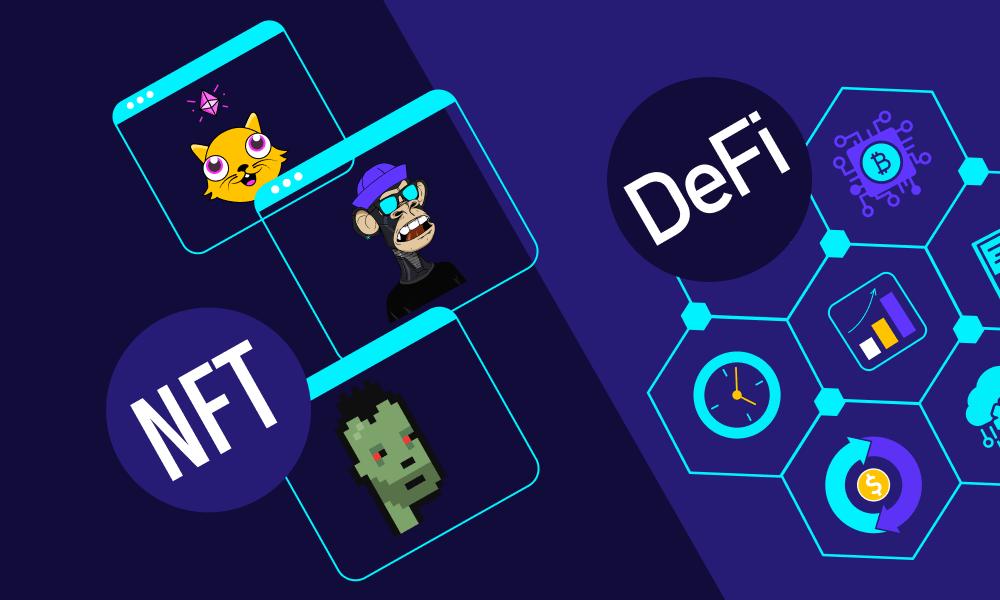
Image Credit: Pixelplex
Supply Chain & Insurance
Decentralized Insurance: For example, weather data or flight delay information can directly trigger smart contracts to automatically execute payouts, improving transparency and operational efficiency in the insurance industry.
IoT & Real-World Assets: On-chain smart contracts can be updated in real-time through sensor data, supporting more complex asset tracking and tokenization applications. For example, in logistics supply chain scenarios, RedStone allows freight status to be synchronized to the blockchain in real-time, enhancing trust and efficiency.
RedStone's Expansion Roadmap
Rapid Expansion and Ecosystem Growth
Since the mainnet launch in January 2023, RedStone has expanded to over 70 blockchains, integrating with 130+ projects and protecting billions of dollars in on-chain assets.
The RedStone team's efficient execution allows them to deploy to new blockchains within 1-2 weeks, which is significantly faster than other oracle service providers, contributing to its rapid rise.
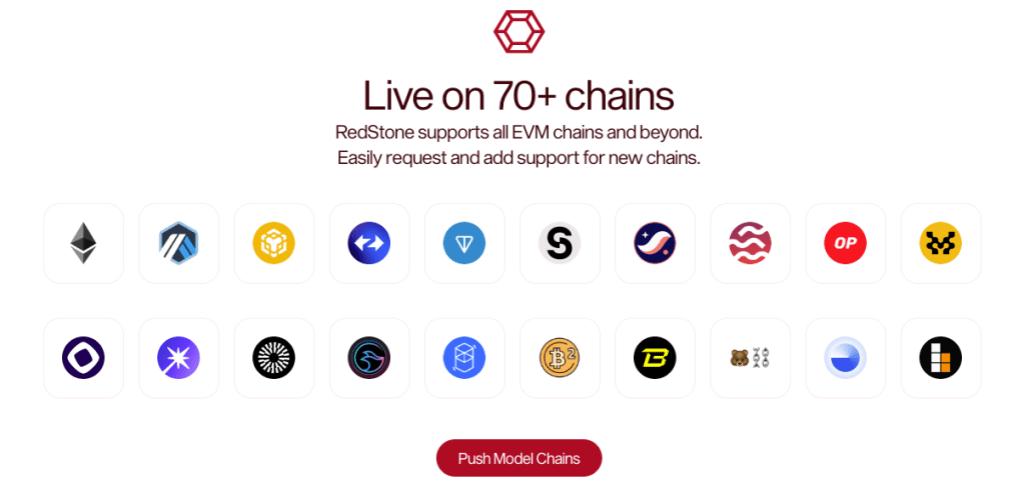
Image Credit: RedStone
Key Partnerships and Funding Support
DeFi Integrations: RedStone has established partnerships with several prominent DeFi projects, such as Lido, EtherFi, Pendle, and Venus, further strengthening its influence in the decentralized finance space.
TradFi Collaborations: RedStone has become the exclusive oracle provider for the CoinDesk indices, enabling a seamless integration of compliant financial data with the DeFi ecosystem, which could drive more institutional-level applications.
Investor Support: RedStone has received around $40 million in venture capital from investment firms like Coinbase Ventures and CoinFund, accelerating its product development and market expansion. Additionally, RedStone is scheduled to launch on the Binance Launchpad by the end of 2024, significantly boosting its market visibility and liquidity.
When Can RedStone Surpass Its Competitors?
Chainlink: Remains the market leader in terms of market share, with advantages in the push data model, large-scale data coverage, and enterprise-level collaborations. However, RedStone's pull model can reduce costs by up to 70% and provide faster update speeds, making it more competitive in terms of efficiency and cost control.
Pyth Network: Excels in sub-second data updates, especially within the Solana ecosystem, but lacks RedStone's multi-chain compatibility, making it weaker in cross-chain applications.
Band & API3: Focus on first-party data or data aggregation models, but still lag behind RedStone's ultra-fast data updates and flexible storage solutions.
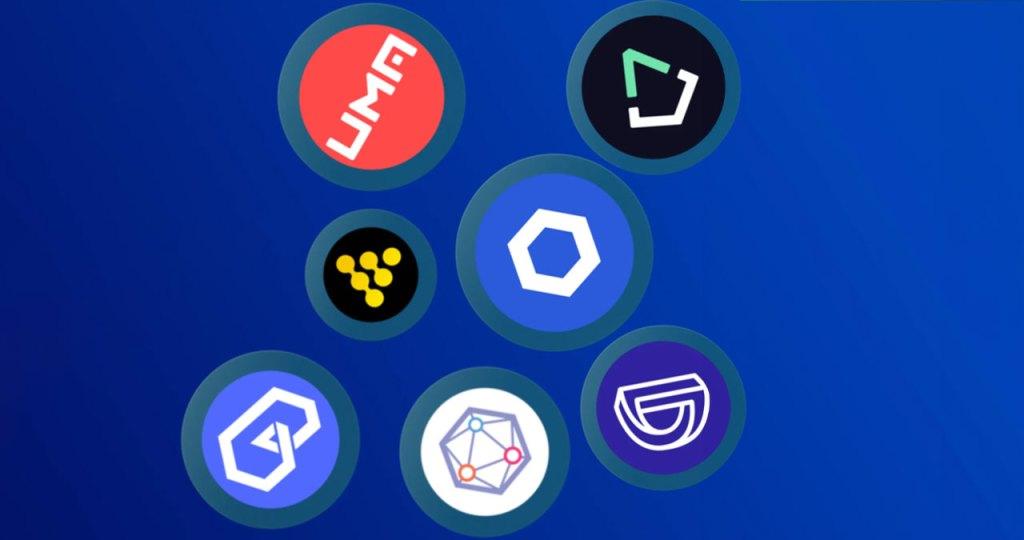
Image Credit: CryptoKid
RED Token: The Core of the RedStone Network
Staking Mechanism and Network Security
The RED token (RED/USDT) was officially launched in March 2025 and is the core of RedStone's economic model. Data providers must stake RED (as well as re-stake ETH through EigenLayer) to join the network.
If a data provider submits erroneous or inaccurate data, the system will trigger a slashing mechanism, deducting a portion or all of their staked funds. This mechanism ensures the credibility of all data providers, maintaining the security and stability of the network.
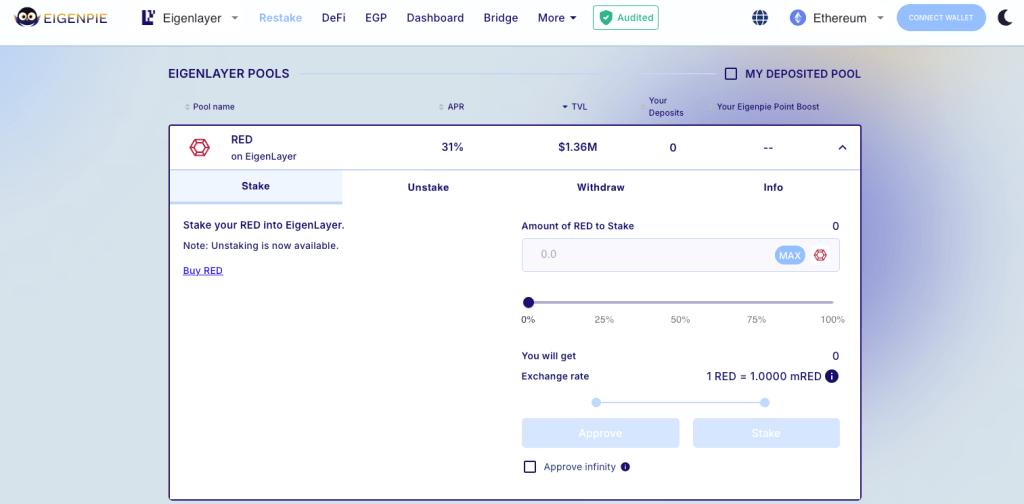
Image Credit: RedStone Staking
Rewards and Fee Distribution
Users: Protocol users need to pay fees to access data, which can be paid in various assets, including ETH, BTC, and stablecoins (USDT, USDC).
Stakers: A portion of the fees will be distributed to RED token stakers as an incentive for maintaining network security.
Token Supply: The total supply of RED tokens is 1 billion, with 28% released at launch, and approximately 50% allocated for community growth and ecosystem incentives to drive long-term development.
Price and Market Performance
In early 2025, the RED token was officially launched on the Binance Launchpool, with an initial price of around $0.86.
The market capitalization and price of the RED token fluctuate with the overall crypto market, but its strong fundamentals (multi-chain applications + high transaction volume) could be the core driver of long-term demand.
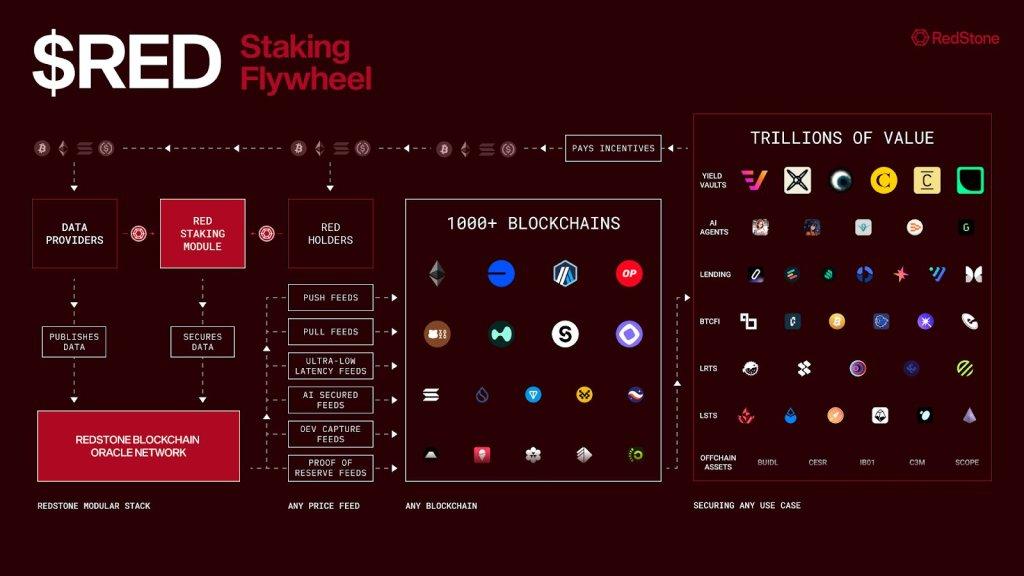
Image Credit: RedStone X (Twitter)
How Does RedStone Ensure Security and Long-Term Growth?
Leadership Team
RedStone was co-founded by Marcin Kaźmierczak (CEO) and Jakub Wojciechowski, with Marcin's initial research on blockchain oracles dating back to 2017.
As of 2024, the RedStone core team has fewer than 30 people, but has successfully built a mainnet-level oracle and expanded to dozens of blockchains, demonstrating strong execution capabilities and market adaptability.

Image Credit: RedStone
Community Engagement
RedStone emphasizes deep interaction with developers and users, establishing close community connections through Discord, Twitter (X), and official documentation. Additionally, the team regularly publishes technical blogs, introducing new features (such as Active Validation Service and Push-Pull data models), and actively solicits community feedback to ensure continuous product optimization.
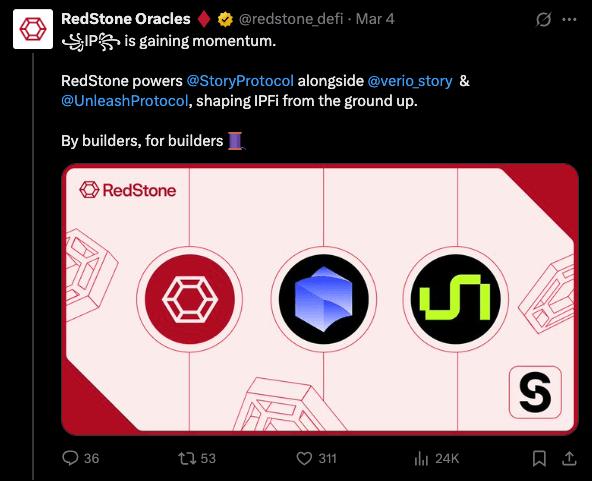 Image Credit: RedStone X (Twitter)
Image Credit: RedStone X (Twitter)
Towards Decentralized Governance
RedStone Distributed Data Association: Responsible for token issuance and major decision-making, with the goal of gradually evolving into a DAO (Decentralized Autonomous Organization) to enhance the transparency and fairness of network governance.
Future On-Chain Governance: RED token holders will be able to propose governance proposals, approve data providers, and decide the long-term development direction of RedStone, ensuring the gradual realization of decentralized autonomy for the entire network.
Challenges and Risks
Market Competition and Network Effects
Chainlink remains the industry leader, with many top DeFi protocols pre-set to use its data feed services, commanding a high market share.
Other oracle competitors (such as Pyth, Band, API 3) have advantages in different market segments, and RedStone needs to continuously optimize its technology and business model to maintain competitiveness.
Decentralization Degree of Data Providers
If the majority of nodes are controlled by a few large stakers, it may lead to concentration of computing power, which is detrimental to the decentralized development of RedStone.
RedStone plans to introduce a node reputation system to encourage more independent participants to join, in order to increase the network's decentralization and fairness.
Viability of the Economic Model
Staking rewards depend on the fees paid by data users, and if DeFi ecosystem activity decreases, it may lead to a decline in the earnings of RED token stakers, affecting long-term sustainability.
Providing a variety of assets as rewards for stakers may reduce the direct demand for RED tokens, but it can also prevent RED tokens from losing value due to high inflation.
Technical and Security Risks
Any oracle can become a target for DeFi vulnerabilities, and RedStone needs to continuously optimize its security defense mechanisms to reduce the possibility of hacker attacks.
Relying on Arweave and EigenLayer, if these underlying infrastructures experience failures or attacks, it may trigger a chain reaction that affects RedStone.
Governance and Community Challenges
Decentralized governance may lead to a decrease in decision-making efficiency, which may conflict with the needs of some enterprise users who want to quickly adjust their data strategies.
If community proposals are inconsistent with the interests of large token holders, it may lead to governance disputes, and therefore an effective governance mechanism is needed to balance the needs of all parties.
Regulatory Compliance Risks
Providing traditional financial data may involve data authorization, privacy protection, and legal compliance issues, and RedStone needs to ensure compliance with regulatory requirements in different global markets.
Changes in the regulatory environment may affect RedStone's business in certain regions, especially the compliance requirements for cross-border data transmission, which may become one of the operational challenges.
Future Outlook
RedStone's development direction is highly aligned with the overall trend of Web3, especially in the expansion of modular blockchains and multi-chain ecosystems, where the role of oracles will become increasingly critical. As specialized L1 (Layer 1) and L2 (Layer 2) blockchains continue to emerge, the demand for fast and low-cost data updates from these chains is growing rapidly, which is the core competitiveness of RedStone.
Key Growth Drivers
High-Frequency DeFi Demand: Many DeFi protocols require sub-second price data or advanced data support (such as derivatives markets, AMM mechanisms). RedStone can provide near-real-time data solutions to help these protocols improve market efficiency.
EigenLayer Restaking: By connecting to the Ethereum validator network, RedStone has enhanced network security, which is an attractive choice for decentralized applications (dApps) that need to handle large-scale transactions.
Real-World Assets: RedStone plans to further integrate traditional financial data (such as mortgage rates, stocks, commodity markets) to open up a broader market for the DeFi ecosystem. However, these applications must meet data authorization and regulatory compliance requirements to truly enter the global financial system.
Decentralized Governance
As the RedStone Distributed Data Association gradually transforms into a DAO (Decentralized Autonomous Organization), community members will play a greater role in the following areas:
Adding New Data Feeds
Optimizing Feed-Accuracy Protocols
Adjusting Fee Parameters
Striking a balance between decentralized governance and enterprise-level reliability will determine RedStone's long-term positioning in the Web3 ecosystem and influence its future development landscape.
Conclusion
RedStone has quickly gained a competitive advantage in the market through a new oracle operating model:
Storing data off-chain and only providing it when needed, reducing blockchain burden and lowering Gas fees.
Using economic incentives and cryptographic signatures to ensure data security, improving data accuracy and credibility.
Supporting flexible deployment across multiple blockchains, making it easier for developers to integrate.
Although Chainlink still dominates the market, the demand for more professional, lower-cost, and higher-speed oracles is growing, and RedStone is carving out a niche in this segment.
As the role of the RED token (RED/USDT) in network security and potential cross-chain governance is enhanced, RedStone is not just an alternative to Chainlink, but is more likely to become a core part of the Web3 data infrastructure.
If RedStone can:
Maintain a record of zero pricing errors, ensuring data accuracy
Efficiently scale its business model and optimize its fee structure
Find a balance between community governance and enterprise-level needs
Then, RedStone has the potential to become the preferred "oracle of choice" - efficient, flexible, and truly decentralized - providing stable and sustainable data support for applications in DeFi, NFTs, supply chains, financial markets, and more.
Quick Links
March Global Economic Dynamics: A Must-Read for Crypto Investors
Top 9 Crypto Trends Shaping 2025: AI, DeFi, Tokenization, and More Innovations
Beyond Candlesticks: How On-Chain Data and Macro Trends Drive Bitcoin's Growth
Ethereum Pectra Upgrade Guide: Key Points on Account Abstraction, Staking, and More
Monad vs. Ethereum: Can This Emerging L1 Disrupt the Market?
About XT.COM
Established in 2018, XT.COM currently has over 7.8 million registered users, with over 1 million monthly active users, and a user traffic of over 40 million in its ecosystem. We are a comprehensive trading platform that supports over 800 high-quality cryptocurrencies and 1,000+ trading pairs. XT.COM cryptocurrency trading platform supports spot trading, margin trading, contract trading, and other diverse trading options. XT.COM also has a secure and reliable NFT trading platform. We are committed to providing users with the most secure, efficient, and professional digital asset investment services.




